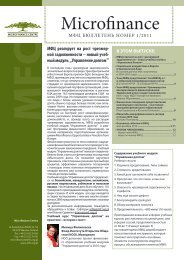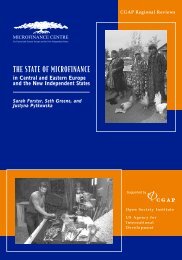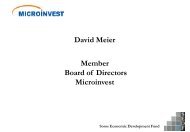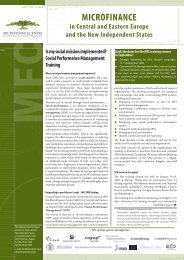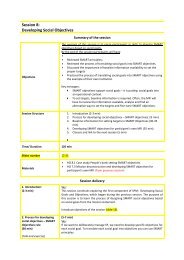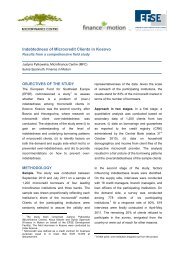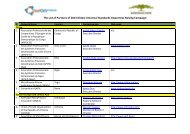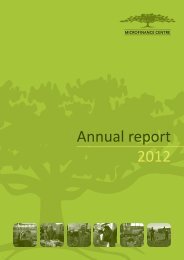Value Chains research report Tajikistan final - Microfinance Centre
Value Chains research report Tajikistan final - Microfinance Centre
Value Chains research report Tajikistan final - Microfinance Centre
Create successful ePaper yourself
Turn your PDF publications into a flip-book with our unique Google optimized e-Paper software.
Increases in production of vegetables in <strong>Tajikistan</strong>, including onions, are conditioned<br />
by a number of factors, including:<br />
• More land occupied by vegetables. 44,800 hectares were dedicated to growing<br />
vegetables in <strong>Tajikistan</strong> in 2010, a 34% increase compared to 2005. This<br />
became possible thanks to moving some of the land from cotton growing to other<br />
crops and lifting heavy restrictions on cotton production plans. Farmers used<br />
most of the land freed from cotton growing for producing onions, since these are<br />
considered one of the most profitable crops, with substantial demand available;<br />
• Increasing yield by using more expensive, higher quality seeds, proper usage of<br />
fertilizers and agricultural machinery;<br />
• Effective usage of pesticides and plant control chemicals;<br />
• Improving farmers’ knowledge on agricultural techniques;<br />
• Increasing access to financing. Production of onions has relatively high-capital<br />
requirements, compared to other crops, and also requires large-scale spending<br />
at various moments during the growing season;<br />
• Favorable climate conditions.<br />
Table 14. Production, yield and area plantation of vegetables in <strong>Tajikistan</strong> in 2005-<br />
2010.<br />
Indicators 2005 2006 2007 2008 2009 2010<br />
Area of plantations, 33,4 35,8 39,1 37,2 40,8 44,8<br />
thousand ha<br />
Gross productions 718,4 759,7 835,1 908,2 1046,9 1142,6<br />
vegetables, thousand tons<br />
Yield, tons per ha 18,7 18,7 19,0 19,9 20,8 20,6<br />
Source: State Statistic Agency of <strong>Tajikistan</strong><br />
Post-harvest Operations of Onions<br />
Onions harvested in <strong>Tajikistan</strong> pass several phases of post-harvest treatment<br />
which are performed manually. These phases include cleaning, trimming the ends,<br />
drying, sorting, calibration, peeling and packaging. Leaders of several farming<br />
households were interviewed to verify the state of processing technology used. The<br />
people performing these post-harvest tasks are mostly women who receive about $3,50<br />
and two hot meals per day.<br />
Packaging for onions<br />
After harvesting and drying, onions are placed in string bags, from 22 to 30 kg<br />
each, before sales begin. String bags are imported from China, though previously they<br />
were brought in from Uzbekistan. Depending on the size and density of the bags, they<br />
fit 20, 22, 25, or 30 kg. The price is 60 diram per bag retail or 45 diram wholesale.<br />
31




